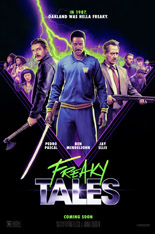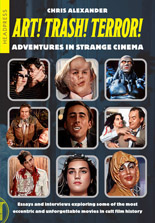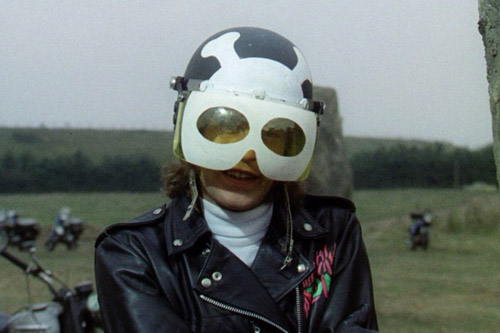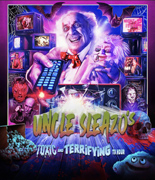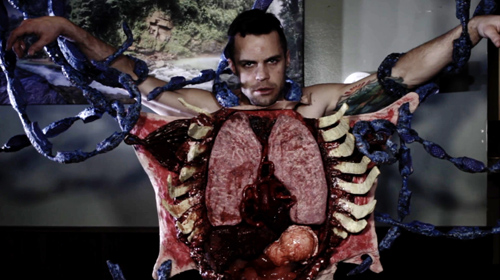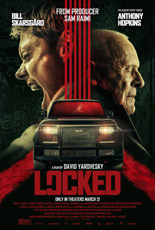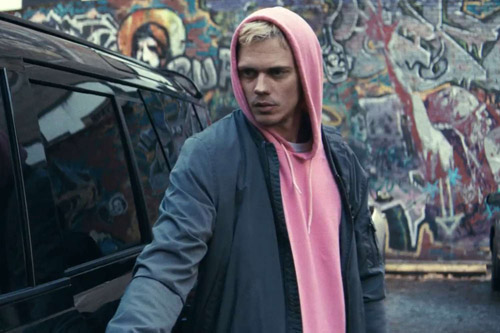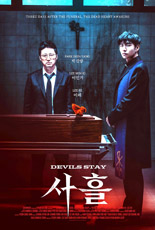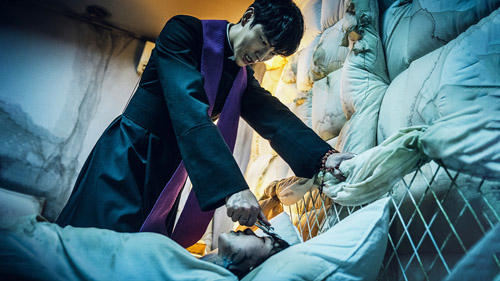
Clearly filmmakers Ryan Fleck and Anna Boden didn’t work out all their 1980s love on Captain Marvel. The decade’s aesthetic — from green neon to VHS tracking fuzz — is all over Freaky Tales like an infection. No can of Bactine stands a chance against the interlocking foursome of stories set in ’87 Oakland, California. (But bookended by unapologetic Nazis and sports stars’ homes robbed mid-game, the movie could take place in ’25 Anywhere, America.)
A simple siege of a peaceful punk club by skinheads, the first story establishes Freaky’s darkly comic, heavily violent tone. The second concerns a different type of war: one of words in a rap battle between Too $hort (Symba) and two young ladies (Normani and Black Panther: Wakanda Forever’s Dominique Thorne) who might be set up to lose. This bit would be entirely incidental, if not for introducing the movie’s ultimate villain (Ben Mendelsohn, Ready Player One) as an ultimate piece of shit.
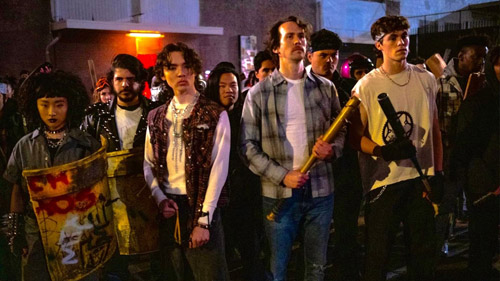
Things pick up considerably in the third segment, fronted by Pedro Pascal (Wonder Woman 1984) as a freelance enforcer on what he promises to his pregnant wife is his last assignment … until suddenly, he’s willing to work overtime for vengeance. (Psst: Somewhere within those ellipses, a surprise A-list cameo awaits to delight.)
Tales reaches its cathartic crescendo in sharing the legend of NBA player Sleepy Floyd (Jay Ellis, Top Gun: Maverick). Although the former Golden State Warrior is a real athlete, the night depicted here sure isn’t as Floyd takes grisly, glorious revenge upon a house party of Confederate scumbags for misdeeds against his family. This bravura sequence not only feels like a kung-fu cousin to the thwarted Manson murders in Quentin Tarantino’s Once Upon a Time in Hollywood …, but practically doubles as a bid for Ellis to front that long-gestating Blade reboot.
Befitting a Tarantino reference, Freaky Tales often plays like chunks from a weekend’s Blockbuster Video binge — say, oh, Repo Man, Heavy Metal, Wild Style and Game of Death — vomited back up in a fever dream. Scrappy and strange with infrequent bursts of energy, this mishmash tries throughout to reach the level of fun it continually teases, until achieving near-nirvana in that fourth and final chapter. —Rod Lott

